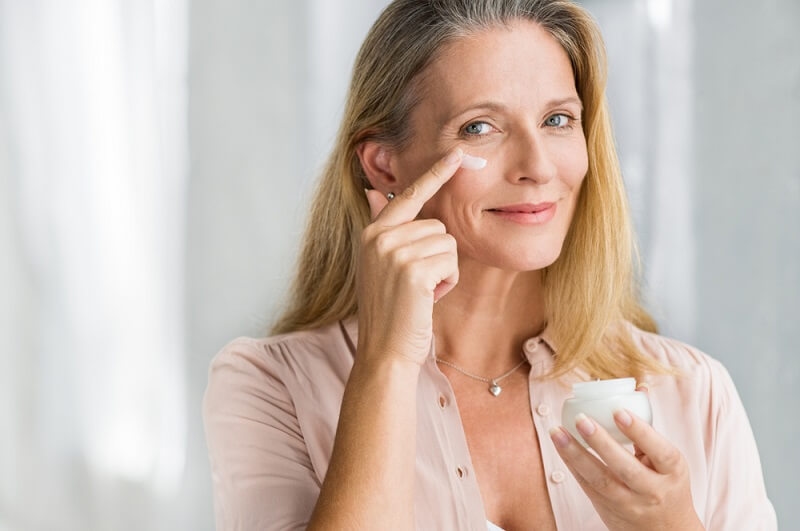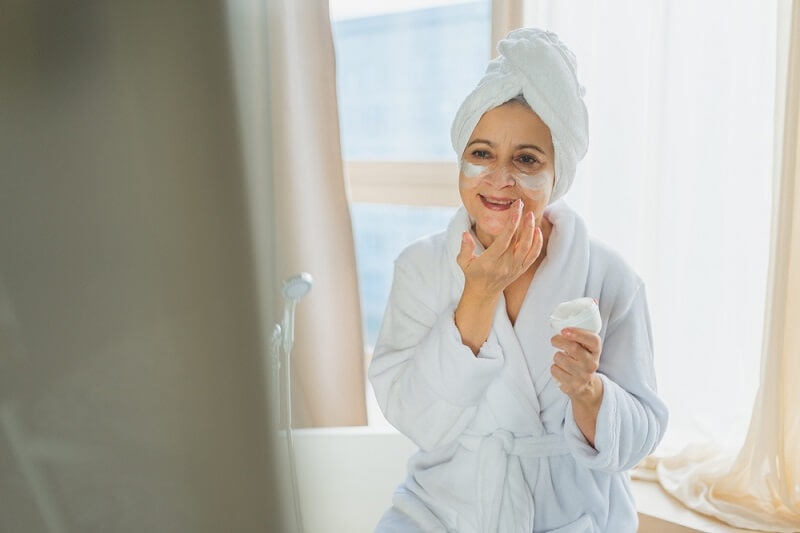
Aging is a privilege, but no one really enjoys seeing those fine lines creep up in the mirror. The first wrinkle on your forehead or the faint smile lines around your mouth can make you pause for a second. It’s not about vanity; it’s about wanting to feel like yourself, confident and glowing, even as the years add up. That’s where a good anti-aging cream comes in — not a miracle potion, but a steady companion that helps your skin bounce back.
We’ve all been there, right? You buy a fancy jar, use it for a week, and then wonder if it’s actually doing anything. Truth is, most anti-aging products take time — they’re marathon runners, not sprinters. The trick lies in picking one that’s backed by ingredients proven to make a difference and fits your skin’s rhythm, not fight it.
So, if you’ve ever stood in a beauty aisle feeling overwhelmed, this guide is for you.
You’ve probably noticed how every jar promises smoother, firmer, younger-looking skin. But what actually works? It’s not about the brand name or fancy packaging. It’s about science-backed ingredients and consistency.
A truly effective anti-aging cream should do three main things:
Here’s what to look for when you’re scanning the ingredient list:
The key isn’t loading up on all of them at once. It’s about balance. Think of your skincare routine like a diet — too much of one thing won’t help if the rest is missing.
Aging isn’t just about birthdays. It’s a mix of genetics, lifestyle, and how well you protect your skin from the world around you. Sun exposure, stress, lack of sleep, dehydration — they all team up to break down collagen and elastin, the proteins that keep skin firm and smooth. Add a little gravity to the mix, and well, it’s game on for wrinkles.
Then there’s your skin barrier — think of it as the protective coat keeping moisture in and irritants out. As you age, this barrier weakens, leading to dryness, rough texture, and uneven tone. That’s when fine line reduction becomes less about vanity and more about restoration.
But here’s the bright side — your skin is smart. Given the right care, it knows how to heal, repair, and renew itself. You just need to feed it what it needs.
Here’s where many people go wrong — picking products based on trends, not skin type. A formula that works wonders for dry skin might make oily skin break out.
For Dry Skin: Go for a creamy, rich formula. Look for ingredients like ceramides, hyaluronic acid, and shea butter. A hydrating collagen cream will help restore elasticity while keeping moisture locked in.
For Oily Skin: Lightweight gels or water-based creams are your friends. Avoid heavy oils and thick textures. Instead, choose a retinol moisturizer that gently exfoliates and regulates oil while repairing the skin barrier.
For Sensitive Skin: Stick with fragrance-free and alcohol-free options. Gentle ingredients like peptides, niacinamide, or bakuchiol (a retinol alternative) offer wrinkle repair benefits without irritation.
For Combination Skin: You might need a balancing formula — hydrating but not greasy. A serum-cream combo works best here, especially if you use it at night.
Collagen is basically the scaffolding of your skin. It keeps everything firm, bouncy, and youthful-looking. The problem? From your mid-twenties onward, collagen production starts slowing down — by 1–2% each year. That’s why skin starts to sag and lines deepen over time.
This is where a collagen cream can help. It won’t magically replace collagen, but it can help stimulate your skin’s ability to produce more of it. Ingredients like peptides, vitamin C, and retinoids all play a role in that process.
Pair it with sunscreen (always sunscreen!) because UV damage is one of collagen’s biggest enemies. You could use the best cream in the world, but if you skip SPF, you’re basically taking one step forward and two steps back.

Ask any dermatologist, and they’ll tell you — retinol is the powerhouse of anti-aging skincare. It boosts collagen, speeds up cell renewal, and fades pigmentation. But here’s the catch: it’s strong.
If you’re new to it, start with a low concentration (0.25% or 0.3%) and apply it twice a week. Gradually increase the frequency as your skin builds tolerance. Always use it at night and follow up with moisturizer.
A retinol moisturizer works wonders when paired with hydration. Think of retinol as your sculptor and moisturizer as your cushion. Together, they help your skin look renewed, not stripped.
And whatever you do, don’t mix retinol with exfoliating acids or harsh scrubs — that’s a recipe for redness.
Skincare isn’t just about what you use; it’s when you use it. Your morning routine should protect your skin, while your night routine should repair it.
Morning:
Night:
Nighttime is when your skin goes into recovery mode. Using active ingredients before bed helps them work with your skin’s natural renewal cycle.
Here’s a fun fact: your neck and hands often age faster than your face. The skin there is thinner and more delicate, yet most people stop applying skincare just below their jawline.
When applying your anti-aging cream, always take it down to your neck and décolletage. A few extra seconds each night make a huge difference over time. And if you’re using SPF (which you should be), don’t forget your hands. They deserve protection too.
Good skincare takes patience. You won’t wake up looking ten years younger overnight, but you’ll start to feel the change. Your skin will look smoother, makeup will sit better, and that dullness will fade.
Usually, within four to six weeks, you’ll notice a difference in texture and hydration. Fine line reduction takes a bit longer — around two to three months for visible results. But once your skin starts glowing from within, you’ll know it’s working.
And here’s a tip: take a selfie before you start your new routine. Sometimes progress is gradual, and seeing the “before and after” reminds you how far you’ve come.
Even the best anti-aging cream can’t save your skin if your habits are sabotaging it. Here are a few to steer clear of:
Small corrections in your routine can make your skincare products work twice as hard.
Skincare only does part of the job. What you eat, how you sleep, and how you handle stress all show up on your face.
Simple, sustainable habits do more for wrinkle repair than any product ever could.
The right time? Probably sooner than you think. Most dermatologists recommend starting preventive skincare in your mid-20s. You don’t need heavy formulas — just mild actives like peptides or niacinamide.
Think of it like investing early. The earlier you start, the easier it is to maintain youthful skin tips that last well into your 40s and beyond.
But if you’re starting later, don’t worry. It’s never too late to improve texture, firmness, and glow. Your skin has an incredible ability to bounce back.
Aging gracefully doesn’t mean doing nothing — it means doing what feels right for you. The best anti-aging cream won’t just smooth your skin; it’ll make you feel comfortable in it. It’s about confidence, care, and small daily choices that build long-term results.
Whether you prefer a gentle retinol moisturizer or a hydrating collagen cream, consistency beats perfection. Stick with your routine, wear sunscreen religiously, and treat your skin kindly.
At the end of the day, beauty isn’t about freezing time — it’s about honoring it. Let your skin tell your story, just with a little extra glow.
This content was created by AI